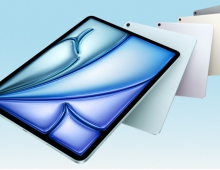
Global Smartphone Sales Fell Slightly in the Fourth Quarter of 2019
Global sales of smartphones to end users contracted in the fourth quarter of 2019, declining by 0.4% year over year, with Apple and Xiaomi to be the only vendors in the top 5 list that to achieved growth, according to Gartner, Inc.
“2019 ended a little better than expected, due to slightly improved performances from North America and emerging Asia/Pacific,” said Anshul Gupta, senior research analyst at Gartner. “However, India, which sold 151.9 million units, overtook the U.S. to become the No. 2 country for smartphone sales in 2019. China maintained the lead, with sales of 390.8 million smartphones over the full year.”
Apple and Xiaomi were the only vendors in the top five to achieve growth in the fourth quarter of 2019. Even with a decline in sales, Samsung held on to the No. 1 position with 17.3% market share. Apple secured the No. 2 position with 17.1% of the market.
Worldwide Smartphone Sales to End Users by Vendor in 4Q19 (Thousands of Units)
Vendor |
4Q19 Units |
4Q19 Market Share (%) |
4Q18 Units |
4Q18 Market Share (%) |
Samsung |
70,404.4 |
17.3 |
70,782.5 |
17.3 |
Apple |
69,550.6 |
17.1 |
64,527.8 |
15.8 |
Huawei |
58,301.6 |
14.3 |
60,409.8 |
14.8 |
Xiaomi |
32,446.9 |
8.0 |
27,843.6 |
6.8 |
OPPO |
30,452.5 |
7.5 |
31,589.9 |
7.7 |
Others |
145,482.1 |
35.8 |
153,312.9 |
37.5 |
Total |
406,638.1 |
100.0 |
408,466.4 |
100.0 |
Source: Gartner (March 2020)
After four consecutive quarters of decline, Apple’s iPhone sales returned to growth, with an increase of 7.8% in the fourth quarter. “A slight lowering of the prices of the iPhone 11 series, compared with the iPhone XR, and other price reductions for previous-generation iPhone models, increased demand. It also helped Apple regain the No. 2 position,” said Annette Zimmermann, research vice president at Gartner.
Sales of iPhones were particularly strong in China, where they grew by 39% in the fourth quarter. Apple also performed strongly in certain mature and developing markets, such as the U.K., France, Germany, Brazil and India.
Gartner analysts expect Apple will launch its first 5G smartphone in the third quarter of 2020. This will encourage users to upgrade in countries where 5G network services are available.
Xiaomi’s smartphone sales totaled 32.4 million units in the fourth quarter of 2019 — a 16.5% increase, year over year. “This strong performance enabled Xiaomi to overtake OPPO and take the No. 4 spot,” said Mr. Gupta. “The price and performance of Redmi models drove Xiaomi’s smartphone sales growth, and the company did particularly well in emerging Asia/Pacific.”
In China, Xiaomi started increasing its smartphone prices to increase profits. The outbreak of the COVID-19 virus in China presents some challenges to retail-focused vendors such as OPPO and Vivo, but creates opportunity for Xiaomi, which has been expanding its online channel strategy.
Despite a small (0.5%) year-over-year contraction in its smartphone sales in the fourth quarter of 2019, Samsung maintained its No. 1 position in the global ranking for 2019. It increased its full-year sales by 0.4% to 296.2 million units.
Worldwide Smartphone Sales to End Users by Vendor in 2019 (Thousands of Units)
Vendor |
2019 Units |
2019 Market Share (%) |
2018 Units |
2018 Market Share (%) |
Samsung |
296,194.0 |
19.2 |
295,043.7 |
19.0 |
Huawei |
240,615.5 |
15.6 |
202,901.4 |
13.0 |
Apple |
193,475.1 |
12.6 |
209,048.4 |
13.4 |
Xiaomi |
126,049.2 |
8.2 |
122,387.0 |
7.9 |
OPPO |
118,693.2 |
7.7 |
118,787.1 |
7.6 |
Others |
565,630.0 |
36.7 |
607,445.4 |
39.0 |
Total |
1,540,657.0 |
100.0 |
1,555,613.0 |
100.0 |
Source: Gartner (March 2020)
Samsung revamped its midtier and entry-level smartphones in 2019. To attract price conscious buyers of premium smartphones, it launched the Galaxy S10 Lite and Galaxy Note 10 Lite in early January 2019. In addition, it recently announced a new foldable smartphone to counter the threat from Huawei. “The fierce battle between Samsung and Huawei in the foldable phone market will be interesting to follow this year, as each vendor takes a different approach,” said Mr. Gupta. “Samsung has switched from a horizontal to a vertical fold in the Galaxy Z Flip and reduced this phone’s size and price. Huawei has launched the Mate Xs — with Huawei Mobile Services now accessible via the Huawei AppGallery worldwide and increased its price.”
Huawei experienced the highest growth in 2019 with an overall annual increase of 18.6%. This helped it secure the No. 2 spot for the year, ahead of Apple. While facing an extended ban from the U.S., Huawei aggressively pursued its smartphone strategy in China, where it grew its market share by 37% in 2019. “If Huawei continues to face a ban on accessing technology from the U.S. in 2020, its smartphone prospects in the international smartphone market will be severely impacted,” said Mr. Gupta.
“Looking forward, while the COVID-19 outbreak will impact smartphone demand negatively in China in the first quarter of 2020, we do not expect a demand contraction in the international smartphone market during that period,” said Ms. Zimmermann.





















